Farmers in New Zealand are well used to droughts. In the traditional dairy heartland of the Waikato region, there is no irrigation so summer droughts are commonplace and expected. Even in the South Island, where irrigation is more common, summer droughts are still a feature and farmers still have to react.
So what do the New Zealanders do? When I last visited New Zealand in 2015, traditional (and consistently profitable) farmers such as Arthur Bryan and Leonie Guiney were talking about going on long rotations, making the cows work harder by cleaning out paddocks to below 3.5cm post-grazing height, culling empty cows early and drying off first-lactation cows to reduce feed demand. The last thing they were going to do was put in a lot of supplement too soon.
To flesh this out further, I asked consultant Lynaire Ryan to come up with a few bullet points for how farmers there would tackle a bad drought, like we’re getting in Ireland now. This is her advice:
Reduce demand where possible
Dry off low-producing cows and any young cows in low body condition score or any mature cows in very low body condition score.Get cull cows to the factory early.Remove non-productive animals off the milking platform if cheaper alternatives for feed exist elsewhere, such as outside blocks, etc.Consider once-a-day milking to reduce demand for feed.Don’t expect to fully feed cows – allow production to drop.
Use supplement strategically –work out what supplement you have available
Calculate your winter and early spring supplement needs and ring fence this (do not eat into this feed).The next highest priority is to have supplement to use strategically. The best policy is to use the supplement you have when it rains to lengthen the rotation and rapidly rebuild grass cover. When it does rain sufficiently, pile in the supplement to slow down the rotation and let the feed get ahead. Farmers should aim to have enough supplement to feed for two weeks after the rain comes. This is the higher priority for supplement, rather than feeding to maintain production during the drought period.As long as supplement is available for the winter/spring and the period after the drought breaks, then great. However, if there is no more supplement, just let cow production drop, unless you can get an economic source of feed. Even if an economic source of feed is available not all farmers would feed it. 
New Zealand regularly gets severe droughts where no growth occurs. \ Peter Varley
Lengthen the round to 30 to 40 daysAllow production to drop.On many farms (where there is general understocking or poor grazing practices) there is a layer of dry matter of unutilised pasture. The cows will eat this, production will drop, but you will be doing your farm a great favour cleaning out this dead material. The subsequent growth when it comes will be of much better quality. In total covers, this is grazing down from residuals of 1,500kg DM/ha to residuals of 1,200kg DM/ha. [This is the same as grazing from 4cm to 3cm post-grazing height.]A serious drought in NZ is one where you can’t tell whether the cows have just finished grazing the paddock or whether that is the new paddock they are going into – ie both grazed and new paddocks are bare and look the same.
Review your feed input policy – how much are you prepared to pay for feed?
Consider non-financial factors such as time, effort, staffing requirements and pressure, effluent management v peace of mind, etc. You also need to allow for wastage and the quality of feed purchased.
Don’t forget to look after young stock
You cannot compromise their growth. You also need to ensure that animals are not restricted on water intake.It’s important to realise now that the biggest pressure is on the farmer, not on the cows. Handling the mental pressure of a drought is the hardest. The best thing farmers can do now is to contain the problem to this period and not create problems in future parts of the season by eating into supplement needed for winter and spring.Closer to home, the last decent drought in Ireland was in 2006. At that time, Gary Nolan was measuring and monitoring grass on farms as part of the Grazing Musketeers programme.
Since then, Gary has been farming in the state of Missouri, US – an area well used to summer droughts. These are some of Gary’s thoughts about managing through a drought in Ireland:
Different areas of the same country, county, parish and field will have different soil moisture deficits. Therefore, we can’t have the same approach for a farm or a country as more specific management is needed in extreme circumstances.
April and September are the two most important months for grass growth and quality. In a severe drought, if grass plants are not fully recovered in the autumn, the effect will roll over into the next spring. In most years, you would expect a serious compensation in grass growth after a dry spell. However, this is unlikely if the drought carries into September.
In terms of dealing with the drought, farmers should use the easy option first – meal. But that’s not necessarily the cheapest.
Make sure the farm is clean and ready to grow when it does rain. If grass quality is poor, there is no point in having a very long rotation length as all you will be doing is pushing out poor quality feed for longer.
A guideline rotation length of 28 to 30 days is fine, but only if the drought lasts for no more than two rounds, ie 60 days. After that, you will find yourself going into grass covers when the grass plant is at the 1.5 leaf stage and plant death will occur as the energy reserves in the crown will be gone.
A post-grazing height of 3.5cm should never be sacrificed if you think you are going to be in for a long term drought. The following advice is based on Gary’s experience of managing droughts in Ireland and Missouri.
Cull low-performing cows.Pregnancy check earlier than normal and cull the empty cows.Fully feed cows for as long as you can. If you don’t have any grass left and are feeding full supplement, the trigger for once a day is when you feel the cows will lose weight in current conditions and feed allowance. It makes little sense to dry cows off too early, as the main dry cow diet is forage, which is the deficit in the milking cow diet, unless of course dry cows can be moved to an outblock where there is more grass and less demand for that feed.Don’t let this year’s drought hinder next years’ production. The drought in Missouri in 2012 hurt production for two years after. Grass growth was less because we sacrificed tillers. Youngstock were too small as first-lactation cows.Hold rotation length at 30 days only if your pre-grazing yield has three leaves on it. Don’t forget that you can kill grass in Ireland by grazing it too early. As soon as it rains and the drought has broken, park the cows and feed heavy for 10 days to slow down the rotation length. Every 1kg of supplement fed during that period will grow 15kg of grass. Two days of extra supplement after the rain will give a huge surplus in autumn and will result in cutting or deferring grass in September for grazing or feeding out in November. Two days of extra supplementation at a low stocking rate will drive your cover higher (above average farm cover of 1,250kg/ha) due to elevated growth rates due to a large block of the farm at a cover of around 1,300kgDM/ha at the same time.Warm nights are as harmful as dry periods. Stomata on grass plants stay open and grass plants respire and dry out. On severely affected farms, have a direct drilling plan in place to thicken swards in September.There will be a big burst of clover after the rain comes, so watch out for bloat.Protect forage and high carbohydrate feeds as high protein and starch feeds can always be bought.The key message from the New Zealand advice is to reduce demand. It’s a culture shock for many Irish farmers to even consider drying off cows now, or letting production drop by making them work harder to get their feed.
But the point is, it can cost a lot more to pay for high levels of supplement than the return you get in milk.
So why do it?
I think it’s important to move away from thinking on a per-cow basis towards looking at the farm on a ‘‘money in v money out’’ basis from now until the end of the year. It’s not a year to be beating milk solids per cow records.
As Gary Nolan reminds us, there should be a lot of grass around this autumn if it rains in time, so putting a plan in place to capture as much of this grass is critical.
Read more
Dairy management: reducing demand for grass and staying positive
Grass+: growth drops as drought worsens
Farmers in New Zealand are well used to droughts. In the traditional dairy heartland of the Waikato region, there is no irrigation so summer droughts are commonplace and expected. Even in the South Island, where irrigation is more common, summer droughts are still a feature and farmers still have to react.
So what do the New Zealanders do? When I last visited New Zealand in 2015, traditional (and consistently profitable) farmers such as Arthur Bryan and Leonie Guiney were talking about going on long rotations, making the cows work harder by cleaning out paddocks to below 3.5cm post-grazing height, culling empty cows early and drying off first-lactation cows to reduce feed demand. The last thing they were going to do was put in a lot of supplement too soon.
To flesh this out further, I asked consultant Lynaire Ryan to come up with a few bullet points for how farmers there would tackle a bad drought, like we’re getting in Ireland now. This is her advice:
Reduce demand where possible
Dry off low-producing cows and any young cows in low body condition score or any mature cows in very low body condition score.Get cull cows to the factory early.Remove non-productive animals off the milking platform if cheaper alternatives for feed exist elsewhere, such as outside blocks, etc.Consider once-a-day milking to reduce demand for feed.Don’t expect to fully feed cows – allow production to drop.
Use supplement strategically –work out what supplement you have available
Calculate your winter and early spring supplement needs and ring fence this (do not eat into this feed).The next highest priority is to have supplement to use strategically. The best policy is to use the supplement you have when it rains to lengthen the rotation and rapidly rebuild grass cover. When it does rain sufficiently, pile in the supplement to slow down the rotation and let the feed get ahead. Farmers should aim to have enough supplement to feed for two weeks after the rain comes. This is the higher priority for supplement, rather than feeding to maintain production during the drought period.As long as supplement is available for the winter/spring and the period after the drought breaks, then great. However, if there is no more supplement, just let cow production drop, unless you can get an economic source of feed. Even if an economic source of feed is available not all farmers would feed it. 
New Zealand regularly gets severe droughts where no growth occurs. \ Peter Varley
Lengthen the round to 30 to 40 daysAllow production to drop.On many farms (where there is general understocking or poor grazing practices) there is a layer of dry matter of unutilised pasture. The cows will eat this, production will drop, but you will be doing your farm a great favour cleaning out this dead material. The subsequent growth when it comes will be of much better quality. In total covers, this is grazing down from residuals of 1,500kg DM/ha to residuals of 1,200kg DM/ha. [This is the same as grazing from 4cm to 3cm post-grazing height.]A serious drought in NZ is one where you can’t tell whether the cows have just finished grazing the paddock or whether that is the new paddock they are going into – ie both grazed and new paddocks are bare and look the same.
Review your feed input policy – how much are you prepared to pay for feed?
Consider non-financial factors such as time, effort, staffing requirements and pressure, effluent management v peace of mind, etc. You also need to allow for wastage and the quality of feed purchased.
Don’t forget to look after young stock
You cannot compromise their growth. You also need to ensure that animals are not restricted on water intake.It’s important to realise now that the biggest pressure is on the farmer, not on the cows. Handling the mental pressure of a drought is the hardest. The best thing farmers can do now is to contain the problem to this period and not create problems in future parts of the season by eating into supplement needed for winter and spring.Closer to home, the last decent drought in Ireland was in 2006. At that time, Gary Nolan was measuring and monitoring grass on farms as part of the Grazing Musketeers programme.
Since then, Gary has been farming in the state of Missouri, US – an area well used to summer droughts. These are some of Gary’s thoughts about managing through a drought in Ireland:
Different areas of the same country, county, parish and field will have different soil moisture deficits. Therefore, we can’t have the same approach for a farm or a country as more specific management is needed in extreme circumstances.
April and September are the two most important months for grass growth and quality. In a severe drought, if grass plants are not fully recovered in the autumn, the effect will roll over into the next spring. In most years, you would expect a serious compensation in grass growth after a dry spell. However, this is unlikely if the drought carries into September.
In terms of dealing with the drought, farmers should use the easy option first – meal. But that’s not necessarily the cheapest.
Make sure the farm is clean and ready to grow when it does rain. If grass quality is poor, there is no point in having a very long rotation length as all you will be doing is pushing out poor quality feed for longer.
A guideline rotation length of 28 to 30 days is fine, but only if the drought lasts for no more than two rounds, ie 60 days. After that, you will find yourself going into grass covers when the grass plant is at the 1.5 leaf stage and plant death will occur as the energy reserves in the crown will be gone.
A post-grazing height of 3.5cm should never be sacrificed if you think you are going to be in for a long term drought. The following advice is based on Gary’s experience of managing droughts in Ireland and Missouri.
Cull low-performing cows.Pregnancy check earlier than normal and cull the empty cows.Fully feed cows for as long as you can. If you don’t have any grass left and are feeding full supplement, the trigger for once a day is when you feel the cows will lose weight in current conditions and feed allowance. It makes little sense to dry cows off too early, as the main dry cow diet is forage, which is the deficit in the milking cow diet, unless of course dry cows can be moved to an outblock where there is more grass and less demand for that feed.Don’t let this year’s drought hinder next years’ production. The drought in Missouri in 2012 hurt production for two years after. Grass growth was less because we sacrificed tillers. Youngstock were too small as first-lactation cows.Hold rotation length at 30 days only if your pre-grazing yield has three leaves on it. Don’t forget that you can kill grass in Ireland by grazing it too early. As soon as it rains and the drought has broken, park the cows and feed heavy for 10 days to slow down the rotation length. Every 1kg of supplement fed during that period will grow 15kg of grass. Two days of extra supplement after the rain will give a huge surplus in autumn and will result in cutting or deferring grass in September for grazing or feeding out in November. Two days of extra supplementation at a low stocking rate will drive your cover higher (above average farm cover of 1,250kg/ha) due to elevated growth rates due to a large block of the farm at a cover of around 1,300kgDM/ha at the same time.Warm nights are as harmful as dry periods. Stomata on grass plants stay open and grass plants respire and dry out. On severely affected farms, have a direct drilling plan in place to thicken swards in September.There will be a big burst of clover after the rain comes, so watch out for bloat.Protect forage and high carbohydrate feeds as high protein and starch feeds can always be bought.The key message from the New Zealand advice is to reduce demand. It’s a culture shock for many Irish farmers to even consider drying off cows now, or letting production drop by making them work harder to get their feed.
But the point is, it can cost a lot more to pay for high levels of supplement than the return you get in milk.
So why do it?
I think it’s important to move away from thinking on a per-cow basis towards looking at the farm on a ‘‘money in v money out’’ basis from now until the end of the year. It’s not a year to be beating milk solids per cow records.
As Gary Nolan reminds us, there should be a lot of grass around this autumn if it rains in time, so putting a plan in place to capture as much of this grass is critical.
Read more
Dairy management: reducing demand for grass and staying positive
Grass+: growth drops as drought worsens






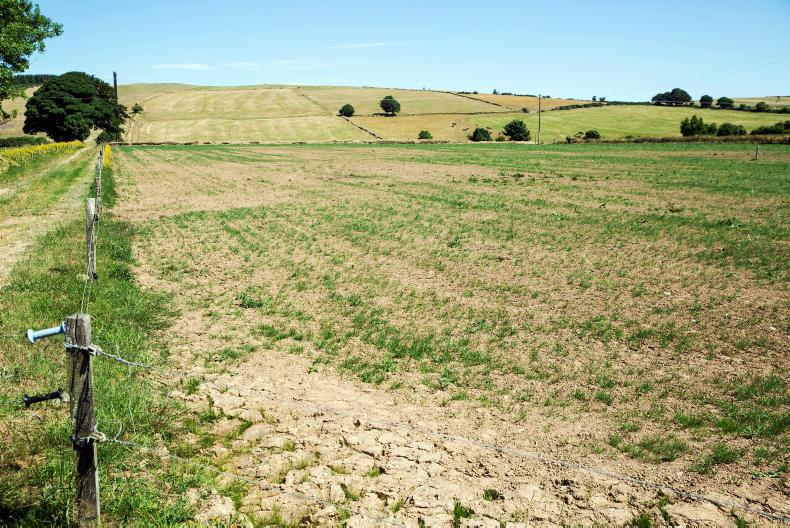
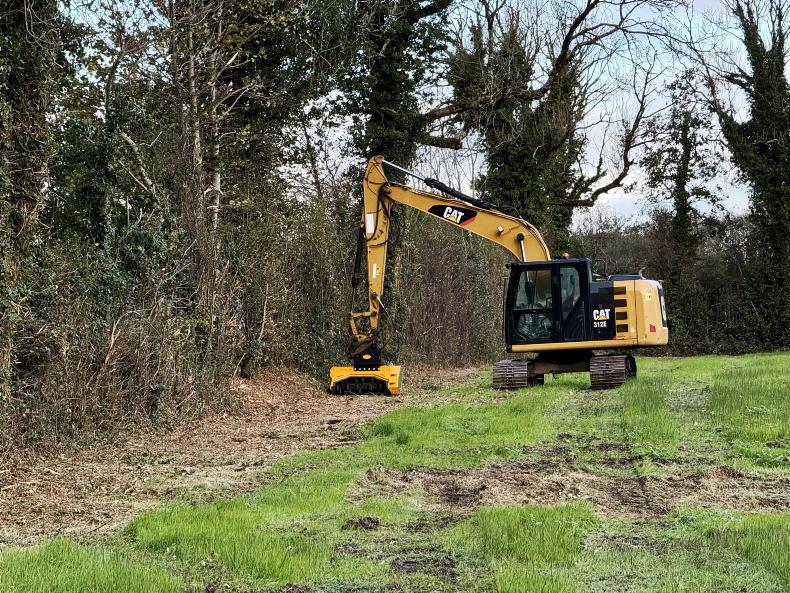
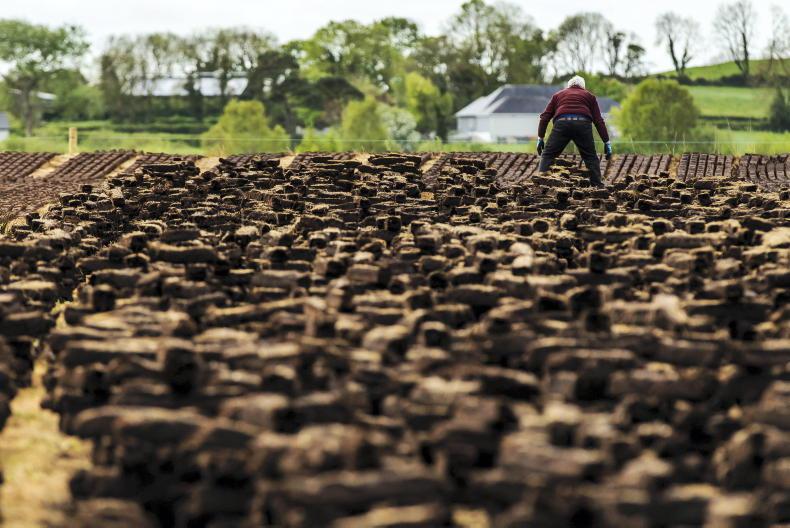
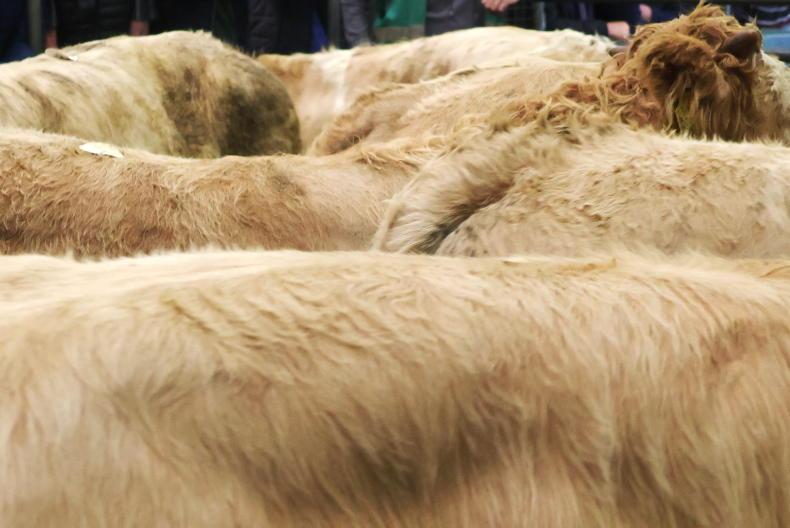
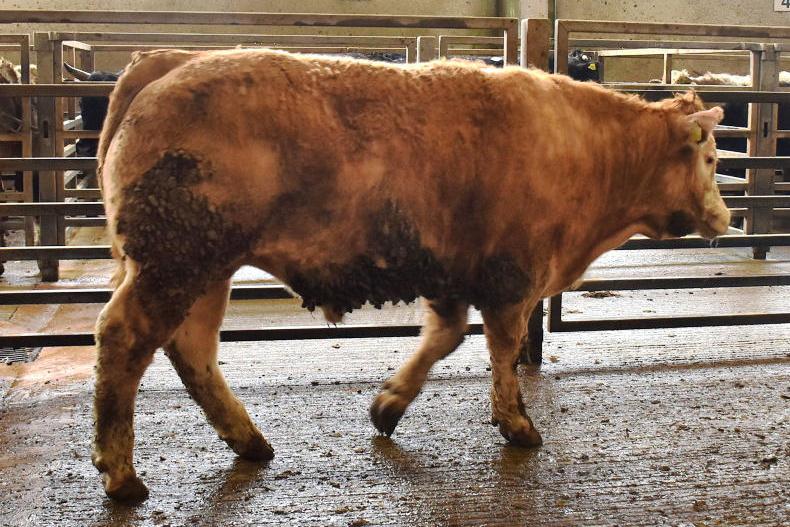
SHARING OPTIONS